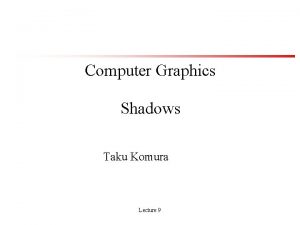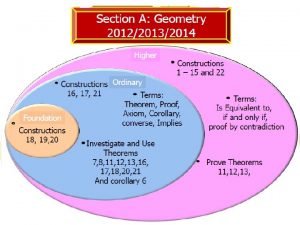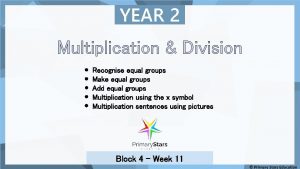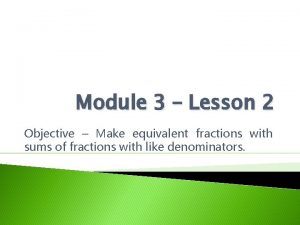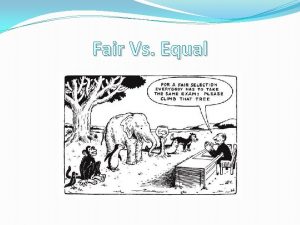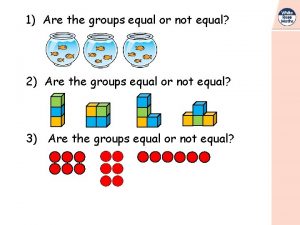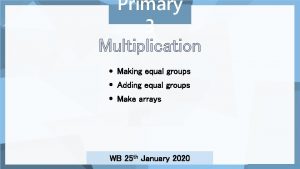Make Equal Groups 3 OA 1 Interpret products











- Slides: 11

Make Equal Groups 3. OA. 1 -Interpret products of whole numbers, e. g. , interpret 5 x 7 as the total number of objects in 5 groups of 7 objects each. For example, describe a context in which a total number of objects can be expressed as 5 x 7. Created by Alyson Serwacki Lynn, Ma

In this lesson you will learn to solve multiplication problems by modeling them as equal groups of objects.

MULTIPLICATION SENTENCE FACTORS PRODUCT 2 X 5 = 10 2 and 5 are FACTORS 10 is the PRODUCT

2 + 3 7 When groups are not equal, you add to find out how many.

3 When groups are equal, you multiply to find out how many. 3 3 3 X 3 = 9

In a multiplication sentence, the x can be read as “groups of. ” 3 Groups X of 3 = 9 Let’s Practice Some!!!!!!! 2 X 2 5 X 4 3 X 6 8 X 2

Let’s Practice Drawing Equal Groups 3 x 7 = 21 The first number tells you how many groups there are. There are 3. Draw 3 groups. The second number tells how many are in each group. There are 7. Draw 7 in each group. Now count how many in all the EQUAL groups.

Let’s Try Another 4 x 3 = 12 The first number tells you how many groups there are. There are 4. Draw 4 groups. The second number tells how many are in each group. There are 3. Draw 3 in each group. Now count how many in all the EQUAL groups.

On Your Own 3 x 5 = 15 The first number tells you how many groups there are. There are 3. Draw 3 groups. The second number tells how many are in each group. There are 5. Draw 5 in each group. Now count how many in all the EQUAL groups.

In Your Notebook Draw the equal groups for each multiplication problem. 4 x 5 3 x 6 7 x 2 5 x 1

Power. Point created by Alyson Serwacki using Microsoft Office 2010 Graphics by Scrappin Doodles and Amazingclassrooms. com
 Equal height equal light
Equal height equal light Equal grouping
Equal grouping What are opposite angles
What are opposite angles Equal height equal light
Equal height equal light Equal area vs equal angle stereonet
Equal area vs equal angle stereonet Recognise equal groups year 2
Recognise equal groups year 2 How are ethnic groups and religious groups related
How are ethnic groups and religious groups related Pepsi vs coke brands
Pepsi vs coke brands Difference between functional and innovative products
Difference between functional and innovative products Natalie sawed five boards of equal length to make a stool
Natalie sawed five boards of equal length to make a stool 0000=4 puzzle
0000=4 puzzle Go make a difference we can make a difference
Go make a difference we can make a difference
